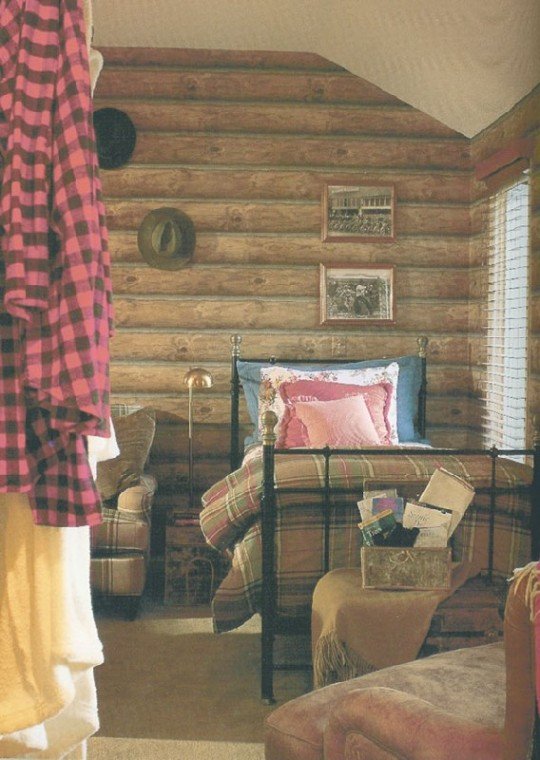One of my favorite ways to transform a room is to use one of our
most versatile decorating tools: wallpaper.
Wallpaper has been a staple since it came into vogue in
17th-century Europe. And today, thanks to new technologies and
innovative designers, wallpaper is no longer found only in the
homes of the well-heeled.
One of my favorite ways to transform a room is to use one of our most versatile decorating tools: wallpaper.
Wallpaper has been a staple since it came into vogue in 17th-century Europe. And today, thanks to new technologies and innovative designers, wallpaper is no longer found only in the homes of the well-heeled.
If you haven’t spent time recently browsing through wallpaper books, I think you will be pleasantly surprised at the stunning array of choices out there. From dramatic vertical stripes to chic grass cloth to lush toiles, there is a vast and varied roster of wallpaper designs that, like a well-chosen spice, can instantly create a rich, enticing and exotic backdrop to any room.
Wallpaper is a wonderful decorating device to use both to reflect your own personality and individual style and to provide ambiance and character inexpensively. It is remarkably simple to install and it lasts for years. You can make a room look larger or smaller, provide the illusion of height for rooms with low ceilings or give depth to a shallow room. Wallpaper can also hide cracked walls and magically add architectural detail to an otherwise bland space.
Here are some tips to
help you choose the right wallpaper:
• Use small prints to create a feeling of space. Small prints are most commonly used in bathrooms and kitchens. Light colors tend to make a room feel more expansive.
• Large prints will make a room look smaller, cozier and darker. Colors, which absorb light, will give a more intimate feel to the space.
• Vertical stripes and floor-to-ceiling patterns make a ceiling seem higher; horizontal stripes and patterns make a narrow room appear to be wider.
• To make a room feel more inviting and cozy, use rich earthy colors such as golds, pumpkins, subdued reds and terra-cotta colors. These vibrant tones work well in rooms with a northern exposure or with limited sunlight.
• In rooms with direct sunlight, use cool colors such as blue, celadon and greens to create a cool feeling.
• If you will be displaying art, textiles and richly detailed objects, opt for more neutral wall coverings to create a backdrop for these items without competing with the artworks. White, gray, cream and beige colors work well, as do wall coverings made of linen, silk, raffia, hemp and grass cloth. Natural fiber wall coverings also add texture, dimension and interest while remaining subtle and serene.
• You can add architectural interest and old-home character to a ceiling using embossed wallpapers with coordinating borders that nicely mimic the look of elegant plasterwork or pressed tin.
• Bathrooms have always been a popular venue for wallpaper because they are small, contained spaces often lacking in visual interest. New collections of wallpaper make playful reference to “reading matter” for the bathroom, including wallpaper that looks like a collection of vintage postcards, reproductions of old-fashioned newspapers and – one of my particular favorites – handsome “library” wallpaper.
• If you are papering a child’s bedroom, you might want to consider a washable paper. I think we’ve all learned that no wallpaper will stand up to abrasive cleaners, though my own wallpaper hanger showed me a neat trick to clean up spots: a little sprinkle of cleanser such as Comet on a damp sponge. Just don’t actually scrub the wall with it; keep a light hand.
• If you are papering the type of sloped upper walls typically found in an attic room, it is best to choose an airy, loose pattern that doesn’t have to be matched exactly when applying, such as a romantic floral.
• Use wallpaper to give your walls the illusion of being something they are not, such as with a faux paneling, stone – or one of my favorites, log-and-chinking paper that suggests a log cabin. I have used such paper in my son’s room and in our house in Vermont.
• For an interesting yet cohesive look when papering adjoining rooms (like a master bedroom and bath or dressing room), select different wallpapers and link them with the same border.
If you find the number of choices overwhelming, just relax and take your time, making sure you ask for samples to take home and live with for a while. When you do make your final selection, I know you’ll be pleased with the design impact in your home.













